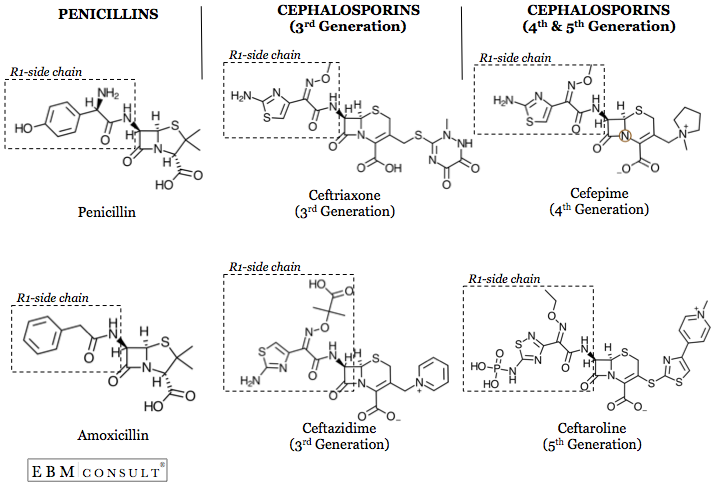Penicillin and Cephalosporin Cross-Reactivity and Risk for Allergic Reaction
Summary:
- A Type I hypersensitivity reaction is IgE-mediated and often causes urticaria, angioedema, bronchospasm, pruritus, or anaphylaxis within minutes to hours of the medication administration.
- The similarity in structure of the R1-side-chains of penicillins and cephalosporins determines the likelihood of cross-sensitivity between the drug classes - not the presence of the beta-lactam ring. The newer generation cephalosporin antibiotics have different R1-side chains making the cross-reactivity low and likelihood of allergic reaction even lower compared to some of the first generation agents and penicillin.
- Current reports the risk for cross-reactions to cephalosporins in patients with reported allergies to penicillin (without skin testing) is < 1%.
- If the hypersensitivity reaction was not Type I or severe Type II, III, IV, cephalosporins can be used in patients with a penicillin allergy after careful evaluation of the timing of the reaction, severity of reaction symptoms, and structural comparison of the penicillin that resulted in the allergy and the cephalosporin being considered.
Author: Carolyn J.
Steber, PharmD
Editor-in-Chief: Anthony J. Busti, MD, PharmD, FNLA, FAHA
Content Editors: Donald S. Nuzum, PharmD, BCACP,
BC-ADM, CDE, CPP and Sabrina W. Cole, PharmD, BCPS
Explanation
|
|---|
MESH Terms & Keywords
|
|---|
|




